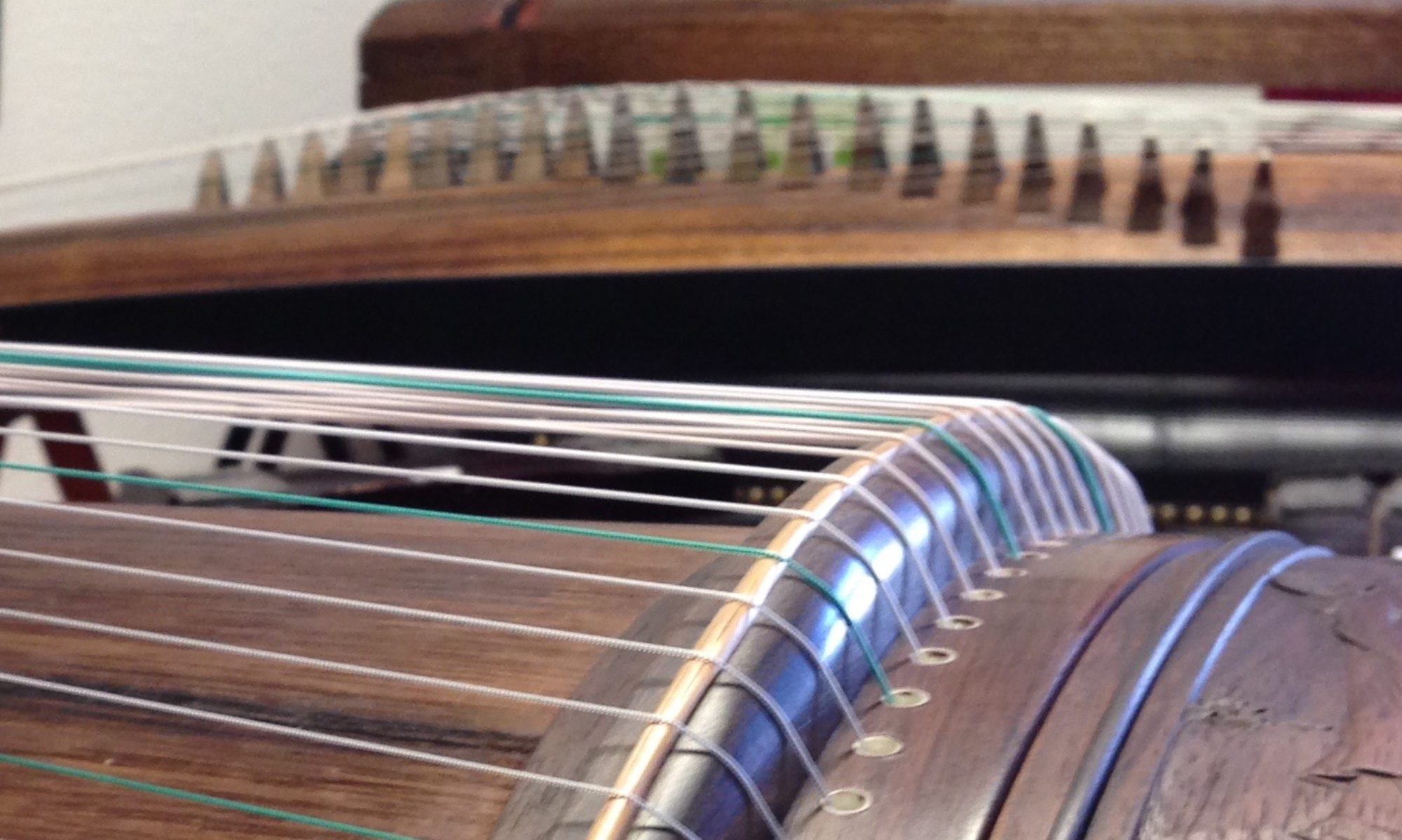The Guzheng Shop is an authorized for the Zhuque (Scarlet Bird) brand guzheng.

Zhuque (Scarlet Bird) brand Guzheng is manufactured by the Musical Instrument Factory of Xi’an Conservatory of Music , which was founded in 1958 in Xi’an, a famous historical city in Northwest China.

Below is a list of frequently asked questions regarding Zhuque Guzheng:
- What are the differences between the traditional construction method that Zhuque Guzheng uses and the modern Guzheng construction method that many other brands use? In the ancient tradition of Guzheng making, the soundboard of a Guzheng was carved from a single piece of paulownia. Modern manufacturer of Zhuque Guzheng still maintains this technique. The soundboard of a Zhuque Guzheng is hand-cut and dug out of 8 to 10 cm thick boards. After both sides of the wood are planed, one side of the board is planed into a double-curved surface (convex surface) . The other side is hollowed into a concave surface, and its arc is natural without any internal stress. In comparison, the modern Guzheng production process artificially bends a 1.5 cm-thick flat plate to force the paulownia wood to be glued to the frame.
- For the soundboards, besides paulownia, why not choose other wood? Most Guzhengs are made from Paulownia wood. Paulownia has the sound projection and quality requirements needed to make a guzheng. The paulownia is a low density, light wood, easy to process, has a bright and beautiful texture, resists warping and deforming, and will not easily burn.
- Why is Lankao Paulownia used for high-quality Guzhengs superior? Lankao is located on the bank of the Yellow River in central China – Henan province. Historically, the Yellow River has flooded and diverted here many times, forming a large area of geologically loose sandy soil with good air permeability. The paulownia grown here has moderate wood porosity, good air permeability and sound permeability.
- How long is the air-drying time of the soundboards? Is there a difference between different Zhuque models? The Zhuque factory has a special yard for storing raw materials, which are aged between 3 and 10 years, depending on the model.
- Why are the prices of various models very different, what are the differences in craftsmanship? Construction for all models use the dug-out method, but there are big differences between models. First of all, the selection of the wood is different. The air-drying time of raw wood is different according to different models, and expertise of the Guzheng maker is different according to different models. Therefore, different models differ in sound and appearance.
- How can Zhuque guarantee sound quality of its guzhengs? Expert appraisal of the timbre is required before the mid-to-high-end Guzhengs are placed into models. High-quality soundboards must be made by experienced Guzheng makers. This is the first guarantee for good tone. After the carpentry is completed, experts will be asked to listen to the instrument. This is the second guarantee for the tone.
- What is the specific function of the sound groove engraved on the inside of the soundboard? When the string is plucked the energy of the string vibration is transmitted to the soundboard through the bridge, which triggers the resonance of the soundboard. This results in cyclic reflection and resonance in the acoustic chamber, and produces resonance harmonics (overtones). The combination of crossover and fundamental frequency has become the unique tone of the Guzheng. The function of the sound groove is to better conduct energy, achieve better reflection and resonance, and also reduces the muddy tone.
- Why are the soundboard of Zhuque Guzheng mostly light-colored? In the past, the production volume of Zhuque Guzheng was low and there were not many models. The appearance was basically black piano paint, with a light-colored soundboard – this was the characteristic look of a Zhuque Guzheng. However, some players feel it is not easy to see the strings on light-colored soundboard. Therefore, in recent years, the dark-colored soundboards which are stained, are also being produced to meet the needs of different customers.
- Why do Zhuque Guzheng mostly use piano paint and are there any advantages to this? In order to ensure the quality, the paints used on Zhuque Guzheng are all environmental-friendly and harmless. The low, medium and high-end paints will be used for 20, 25, and 30 respectively. The piano paint has a thick paint film, full saturation, and high brightness.
- Will Zhuque Guzheng crack in cold and dry areas? No. The soundboard of Zhuque Guzheng is naturally air-dried and the soundboard is dug out by hand, its arc is natural without any internal stress, so it will not crack in cold and dry areas.
- Zhuque Guzheng is produced in northern China, will the tone change when being used in different climates? Zhueque Guzheng can be used anywhere. It will not crack in dry areas. The piano paint that is applied for more than 20 times on each instrument will not cause any issues in humid areas. The varnish on the soundboard prevents dust from adhering, and it will also Isolate moisture. However, if the ambient humidity is too high, it is necessary to take preventative care to maintain your Guzheng. You can put a desiccant in the Guzheng or install a moisture-proof tube to avoid damp expansion, deformation or rusting of the components, which can extend the life of the Guzheng. Occasionally, the dull sound is caused by a variety of factors. As long as it is a wooden instrument, no matter what brand of zither, such problems may occur. If that happens, try changing all the strings and that may solve the problem.
- Has the soundboard of Zhuque Guzheng been treated in any way? Is paint painted on it? What is the purpose of this treatment? The soundboard is painted with a very thin layer of varnish. The purpose is to prevent dust from adhering to the panel and to insulate from any moisture.

